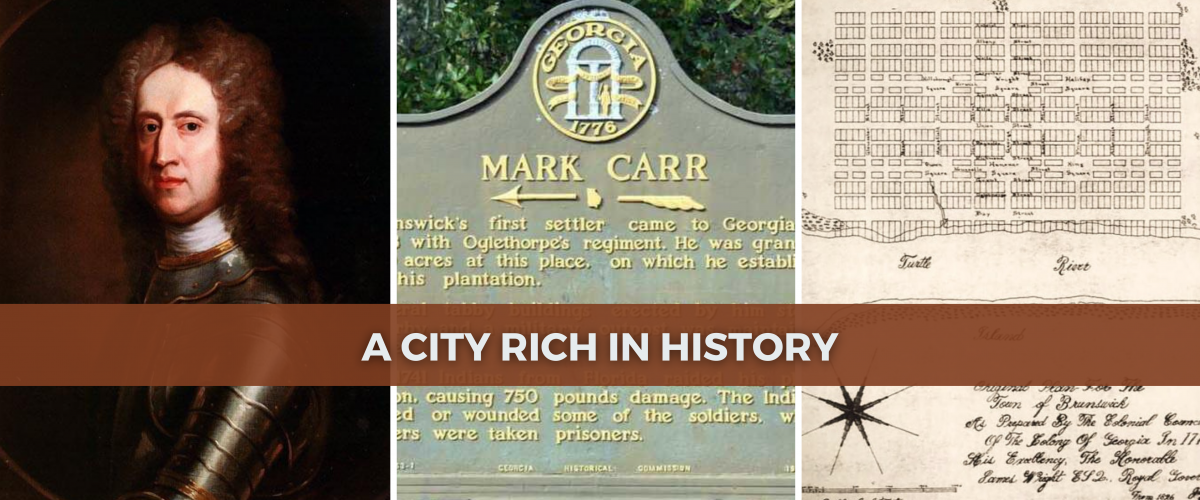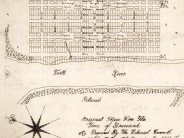18th Century Brunswick

Brunswick became a British settlement in 1738 after Mark Carr, Captain in General James Oglethorpe’s company, arrived at our shores. Upon landing, Carr established “Plug Point”, the 1,000 acre tobacco plantation along Turtle River. It's modern day location is Dartmouth Street and First Avenue.
By 1771, the Royal Province of Georgia purchased Plug Point and renamed it in honor of King George II's ancestral birthplace: Braunschweig, Germany, officially becoming the Town of Brunswick. Braunschweig was also the seat of the House of Hanover, of which King George II was a member and the namesake of Hanover Square. Also occurring in 1771, the Council of the Royal Province of Georgia at a meeting held in Savannah, laid out the town of Brunswick and named the streets and parks in traditional British fashion with grid-like street patterns interspersed with pleasant squares and green spaces, we enjoy today. Similar to the naming of Hanover Square, other streets and squares were named after members of the Royal family and prominent Englishmen of the time.
The Town of Brunswick continued to expand over the period of four years. However, this growth ceased and the town was nearly wiped out during the American Revolution, which began in 1775. Most residents at the time were Tories, loyal Englishmen and women, who fled to Canada and England. As a result - little fighting occurred in the area.
By 1783, the Revolutionary War was over and the General Assembly of Georgia passed an act creating a Board of Commissioners to survey and sell lots of land in the township. The proceeds went toward the founding of Glynn Academy. The present city limits of the time included all the land once known as the Commons.
On February 3, 1797, the County Seat was officially moved to Brunswick from Frederica (St. Simons Island) and part of the Commons were sold to build a courthouse and jail. Half of the funds again went to Glynn Academy. In 1789, Brunswick was made a Port of Entry and the tall ships began to arrive.


